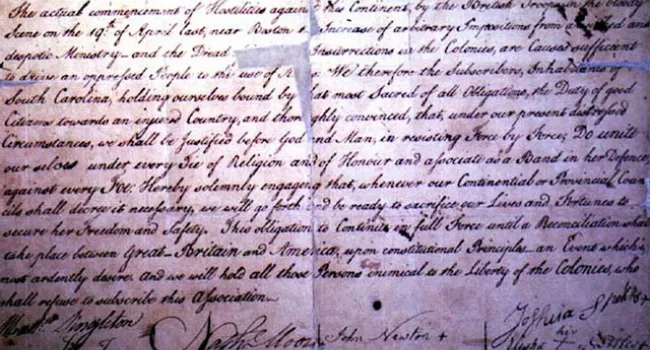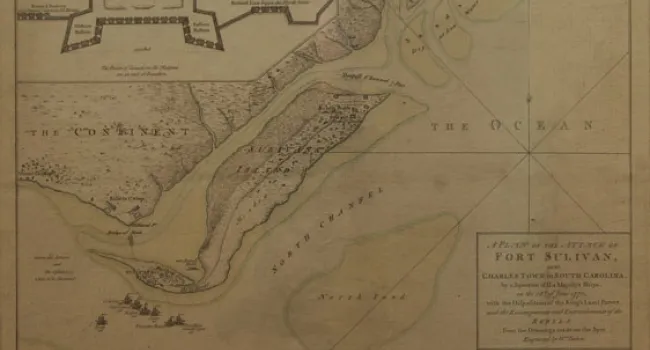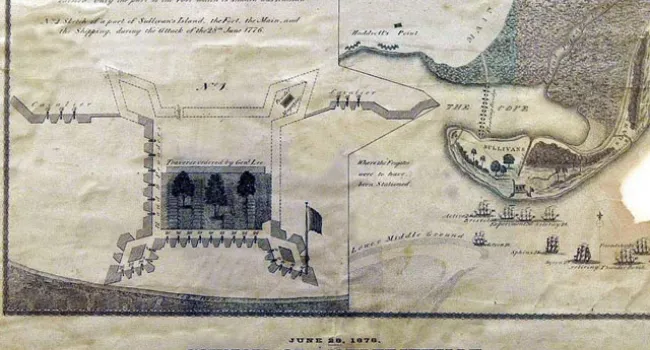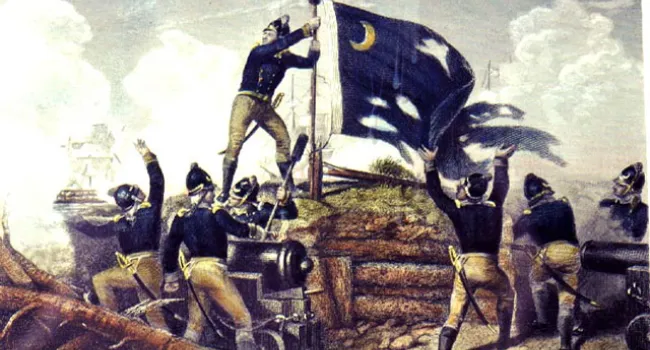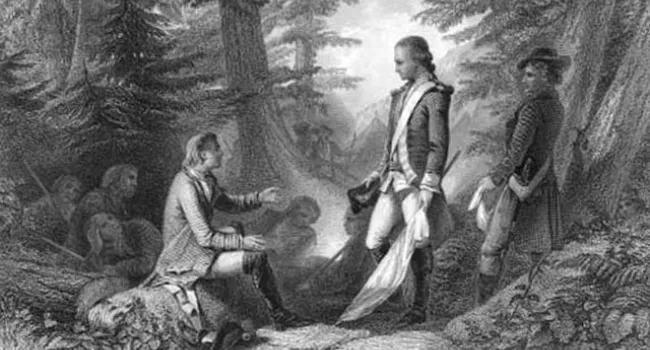
A map of the Battle of Camden. After Charleston fell to the British in 1780, Lord Cornwallis established posts at a number of places in the interior of South Carolina to serve as a base for pacifying the people and winning their loyalty back to England. Despite the efforts of local citizens who fortified their powder magazine, Cornwallis seized Camden on May 1, 1780, and took over the Kershaw House for his headquarters (see Cornwallis House). General Horatio Gates attempted to oust the British in August, but was defeated when his untried militia fled the battlefield site seven miles north of the town. A second attempt in April 1781 led by General Nathanael Greene (see Nathanael Greene) was also defeated when the British General Lord Rawdon took the initiative, but the British forces lost so many men that they evacuated the town, burning the fortifications they had built.
Courtesy of the South Caroliniana Library.
Standards
- Political and economic developments underscored how the colonists in British North America had become uniquely American, prompting the development of a new nation. Drawing on their experience under British rule, the founding generation created a government with shared powers between the state and federal institutions.
- This indicator was developed to encourage inquiry into the process which led to the formation of the U.S. government, including the convening of the Continental Congresses, the passage of the Articles of Confederation, and the adoption of the U.S. Constitution.
- 8.2.CE Explain the economic, political, and social factors surrounding the American Revolution.

